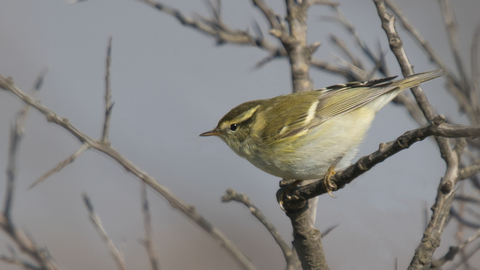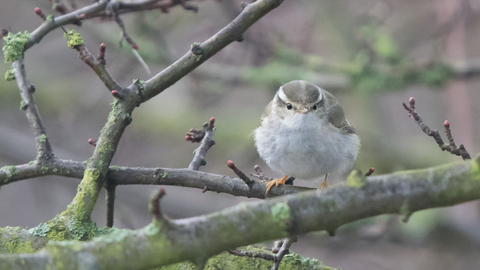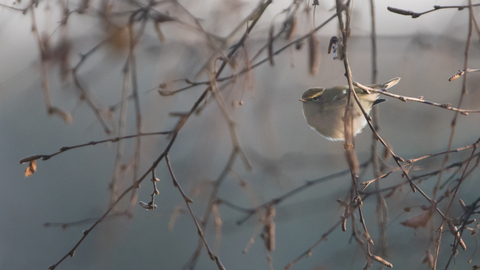
Yellow-browed warbler © Tim Melling

Yellow-browed warbler © Tim Melling

Yellow-browed warbler © Tim Melling
Yellow-browed warbler
Scientific name: Phylloscopus inornatus
This charming little warbler is an increasingly common sight in autumn, when migrants pass through the UK.
Species information
Category
Statistics
Length: 9-10.5 cmConservation status
Classified in the UK as Amber under the Birds of Conservation Concern 5: the Red List for Birds (2021). Protected in the UK under the Wildlife and Countryside Act, 1981.
When to see
Mainly September to NovemberAbout
Yellow-browed warblers are small leaf warblers, related to chiffchaffs and willow warblers. They breed in taiga forests in Siberia and spend the winter in Southeast Asia. Migration between the two regions shouldn't bring them anywhere near the UK, but each autumn sees large numbers recorded here, particularly along eastern coasts. Over the last 50 years they've become much more common, rising from a handful of records each year to well over a thousand.At first it was assumed that these birds were just wayward strays (known as vagrants), which took a wrong turn and are doomed never to return to their breeding grounds. More recently, scientists are theorising that we may be seeing a new migration route developing, with yellow-browed warblers migrating between western Siberia and an unknown wintering area in West Africa.
In the UK, yellow-browed warblers are most common in October. They're usually found in coastal trees and scrub, particularly in sycamores. They often give away their presence with their distinctive call. Like goldcrests, they're restless and rarely stay still for long. Most records come from the north and east, but they can turn up almost anywhere, with a few inland records each year. Occasionally they spend the winter here, or appear in spring.
How to identify
A small warbler, between the size of a golcrest and a chiffchaff. It has a moss green back and whitish underparts. It has two yellowish-white bars on each wing and a long, bright yellow stripe above each eye. It often gives itself away with its call: a high-pitched 'tse-u-weet', which sounds a little like a coal tit.It could be mistaken for the much rarer Pallas's warbler, but that has an extra stripe on the crown and a lemony-yellow patch on the rump.
